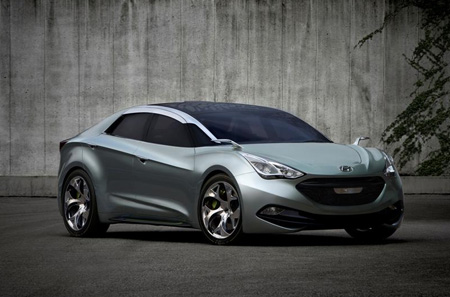Top 10s: Worst Show Cars of 2010
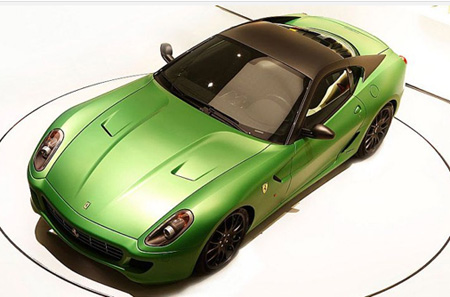 By John LeBlanc
This month’s North American International Auto Show — better known as the “Detroit auto show” — is the official kickoff of the 2011 car show season. Before we get ahead of ourselves, though, and get caught up in the latest and greatest concept and show cars that will debut not only in Detroit but also at international venues like Geneva, New York, Shanghai, Frankfurt and Los Angeles throughout 2011, let’s take a look back at some of the less-than-successful debuts I stumbled onto on the 2010 show car circuit.
By John LeBlanc
This month’s North American International Auto Show — better known as the “Detroit auto show” — is the official kickoff of the 2011 car show season. Before we get ahead of ourselves, though, and get caught up in the latest and greatest concept and show cars that will debut not only in Detroit but also at international venues like Geneva, New York, Shanghai, Frankfurt and Los Angeles throughout 2011, let’s take a look back at some of the less-than-successful debuts I stumbled onto on the 2010 show car circuit.
10. Hyundai i-Flow
Just as important to Korea’s Hyundai as the North American market, tough-to-crack European buyers got a glimpse at the future of the automaker’s design language with the i-Flow concept at last March’s Geneva show. And, to say the least, it wasn’t pretty. The i-Flow is a strange mix of Mazda’s just-killed-off Nagare design at the front (cartoon fenders and bug-eating grin) with over-sculpted fender swages from the first-gen Tiburon heading toward the rear. And what’s with the cut-lines in the roof? Was Hyundai’s design studio welder on sick leave the day the i-Flow was being assembled?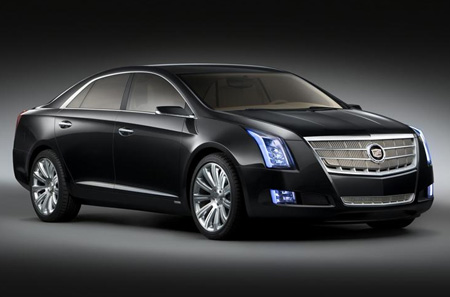
9. Cadillac XTS Platinum
There’s nothing inherently wrong with the Cadillac XTS Platinum, a concept that debuted a year ago in Detroit that will eventually replace the current STS and DTS sedans. Its styling is sharp and clean. Its interior is well-made and loaded with modern features. But Cadillac insists on calling the XTS its “flagship,” a car that is little more than a gussied up Buick LaCrosse. Yes. Cadillac has added length to its midsize platform — mainly to give the XTS some trunk space, something the Buick is woefully lacking. And there’s a high-tech, 350 hp V6 plug-in hybrid powerplant. But where’s the V8? Does parent General Motors really think anyone is going to shop the XTS against other full-size “flagships” from BMW, Audi or Lexus? Heck, even Hyundai, with its forthcoming V8 Equus sedan, knows how to do a proper “flagship.”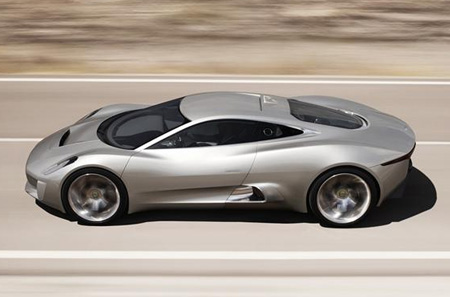
8. Jaguar C-X75
Underneath last year’s Paris auto show’s C-X75 concept’s skin, Jaguar has presented a unique solution to the threat of tougher fuel economy regulations. Two, tiny turbine engines act as “range extenders,” charging the lithium ion batteries that deliver power to the C-X75’s four in-wheel electric motors. At low speeds, zero-emissions. But it’s capable of short bursts up to more than 400 km/h, making it the fastest hybrid ever conceived. Fantastic, eh? But then there are the C-X75’s busy looks. Let’s break it down: the silver-with-green-highlights paint scheme stolen from the Porsche 918 Spyder Hybrid concept from last year’s Geneva show; a back end that looks like a rip-off of the GT by Citroen concept from the last Paris show two years ago; front looks traced from the ill-fated XJ-220 from the 1980s … do I have to say more?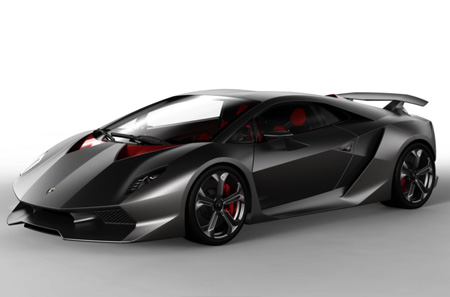
7. Lamborghini Sesto Elemento
One of the most highly anticipated debuts at last year’s Paris show was the Lamborghini Sesto Elemento concept. No automaker teased us leading up to that show more than Lamborghini. And no one disappointed me the most. The Sesto Elemento (Italian for “sixth element”) is one busy piece of carbon-fibre sculpture. Instead of the more simple geometric themes expected from Lamborghini — established by former design boss and now head pen at Seat, Luc Donckerwolke — the latest Lambo concept looked more like it came from the garages at rival Italian super sports car maker Pagani and is hardly worth mentioning in the same breath with Lamborghini design classics like the Miura, Countach, Diablo, Murcielago, Gallardo or Reventon.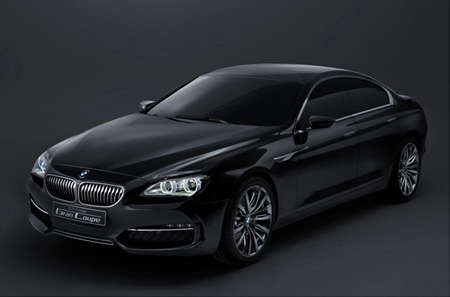
6. BMW 6 Series Gran Coupé Concept
Just as BMW seems to be recoiling from the daring designs produced under former head pen Chris Bangle, its cars are starting to look like the cautiously-designed BMWs of old. The result? In one fell swoop, the new 6 Series — first seen in four-door, Gran Coupé form at last year’s Beijing show — has become an old man’s car. Compared to the 2003 to 2010 big BMW two-door, this four-door 6 (a regular two-door and convertible are also planned) is bigger and more conservatively drawn than its Bangle Butt predecessor. Understandable, as the 6 Gran Coupé is essentially a sleeker version of the 5er midsize sedan, itself based on the full-size 7er. But is it really a “coupe?”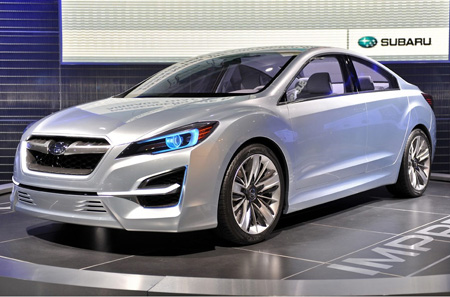
5. Subaru Impreza Design Concept
Japan’s Subaru isn’t into ambiguity with its concept naming. Its Impreza Design Concept, that debuted at last November’s L.A. show, couldn’t be more forthright in its title: a precursor to the next production compact. For those who like the nimble size of the current car, expect a super-sized Impreza. Based on the show car, Subaru’s compact will grow a bit, similar to the increase in size of the current midsize Legacy/Outback as compared to its predecessor. But the Impreza Design Concept also illustrates that Subaru is getting tired of being taken out to the woodshed for blessing its cars with, well, quirky looks, something the current Impreza has been tagged with since the googly-eyed 2002 model was unveiled. Trouble is, the Impreza Design Concept looks anything but unique. It’s as if Subaru designers took photos of every modern-looking sedan they could find, then merged them into some kind of Photoshop blender app. Tell me the back of the car isn’t a rip-off of the Opel Insignia/Buick Regal — a copy of the last BMW 5 Series? Or the front end a bland mix of Taurus/Optima/Passat?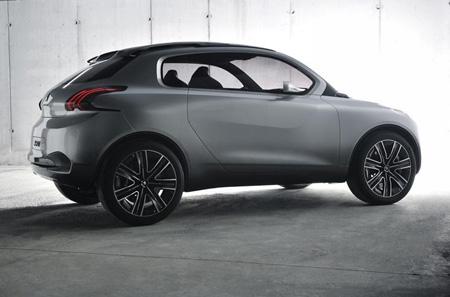
4. Peugeot HR1
The biennial Paris auto show is always good for a few laughs from the Ivory Tower-residing French designers. Last year in Paris, Peugeot’s HR1 concept provided the soundtrack. Peugeot said its designers mixed in design cues from a city car, a two-door coupe and an SUV into the final look of its HR1 hybrid concept. Is anyone surprised the end result is more “dog’s breakfast” than “design icon?” At least the HR1’s drivetrain is of some interest: a turbocharged 1.2-litre three-cylinder gasoline engine in front combined with a 37 hp electric motor positioned in the rear to produce 147 hp, with fuel consumption at a miserly 3.5 L/100 km. While the drivetrain may someday find its way under a production Peugeot, the French automaker is saying — thankfully — that there are no current plans to put the HR1 on sale.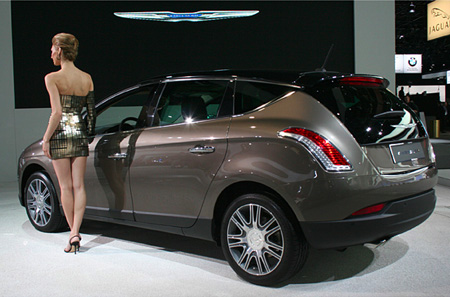
3. Chrysler-badged Lancia “thing”
Among Chrysler’s smells-like-desperation offerings at last year’s Detroit show sat a hastily-rebadged-as-a-Chrysler Lancia Delta hatchback. At least that’s what I presumed. There was no presentation. No marketing materials. No name on the car. Even the Chrysler booth staff didn’t know what to call it. For a moment, let’s put aside the fact the Delta is a sales bomb in Europe. And with a Chrysler badge stuck on it, the plan is what? To get mid-size sedan customers out of their Accords, Camrys or Fusions? Good luck with that…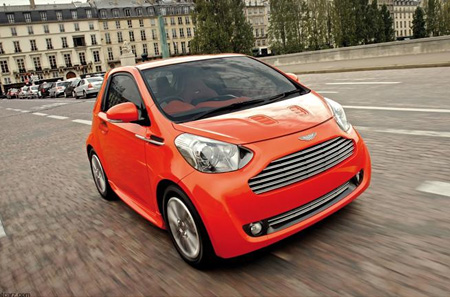
2. Aston Martin Cygnet
First seen at last year’s Geneva show, famed British sports car maker Aston Martin really is going to put into production a made-over Toyota/Scion iQ city car, dubbed the Cygnet. With each Cygnet emitting under 120g/km of CO2, Aston argues that it will help the automaker offset the fuel economy of its V8 and V12 models. Scratch the Cygnet’s exterior Aston styling pastiches (trademark grille, hood vents, chrome side vents and C-shaped taillights) or look under its red leather-clad interior, and there’s little to distinguish the Aston from the Toyota donor car.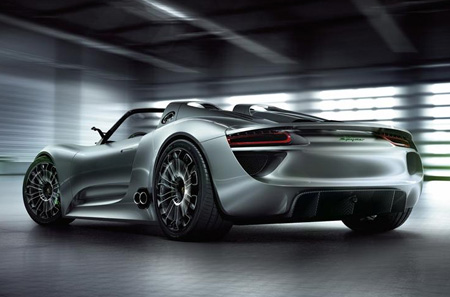
1. Hybrid Supercars
If last year’s Geneva auto show had a recurring theme, it was the idea that high performance cars could also be “green.” Debuts like the Ferrari 599 Hybrid, Porsche 918 Spyder Hybrid (photo at top of story) or Lotus Evora 414E Hybrid all seemed like the proverbial cake-and-eat-it-too propositions. The car company PR fluffers said, “What’s not to love about the combination of style, performance and zero-emission driving?” But the reality is, these low-volume cars are a passing fad, all about corporate image, not saving the planet or reducing corporate fuel economy fleet averages. At most, these supercars may get a few thousand klicks on their odometres over the course of a year; whether powered by fossil fuels or electricity, the environmental impact is nonexistent. So, yeah. The 500 hp Porsche 918 Spyder, that also claims to get 3.02 L/100 km, sounds cool. But if you really want to be environmentally friendly, take transit.01.21.11 | Aston Martin, BMW, Cadillac, Chrysler, Ferrari, Fiat, Hyundai, Jaguar, Lamborghini, Lancia, Peugeot, Porsche, Subaru | Comments Off on Top 10s: Worst Show Cars of 2010





